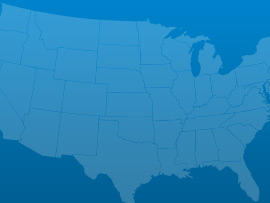Wastewater systems, made up of pipe systems and treatment facilities, provide a safe and cost-effective way to dispose of and clean used water from homes and industry. They protect the environment and water quality as well as recapture and reuse reclaimed water, which is critical to the state’s water supply. Arizona’s innovative reuse of treated, reclaimed water has resulted in reuse of as much as 85% of the state’s wastewater. Arizona has 120 wastewater treatment plants of varying sizes with several dozen more planned as flows continue to increase with the state’s growth. Some smaller communities do not have collection and treatment systems or use outdated methods like lagoons, and 20% of the state’s wastewater treatment plants, mostly smaller rural communities, were receiving flows at or beyond their permitted capacity. Many portions of Arizona’s wastewater systems are 50 years old or more, and the warm climate shortens their useful life and causes corrosive hydrogen sulfide to corrode and break pipes. Due to the recession, many of Arizona’s wastewater plants suffer from deferred maintenance issues that now require attention. Wastewater flows statewide are projected to more than double to nearly 850 million gallons per day within the next 20 years, and the identified need for wastewater treatment and collection improvements is $4.4 billion. Another future challenges facing Arizona’s wastewater facilities is the need to deal with increasing salinity caused by widespread use of salt-based home and industrial water softening systems, which significantly compounds the problem.
 Aviation
Aviation Bridges
Bridges Dams
Dams Drinking Water
Drinking Water Levees
Levees Rail
Rail Roads
Roads Transit
Transit Wastewater
WastewaterA: Exceptional, B: Good, C: Mediocre, D: Poor, F: Failing, ?: Incomplete
Each category was evaluated on the basis of capacity, condition, funding, future need, operation and maintenance, public safety, resilience, and innovation
Bridges
238 of the 7,862 bridges are structurally deficient
Bridges
$19.50 million in bridge funds came from the Federal Highway Bridge Fund in 2011
Dams
89% of the state regulated dams have an Emergency Action Plan
Dams
108 high hazard dams
Drinking Water
$7.4 billion in drinking water infrastructure needs over the next 20 years
Energy
6.941 gigawatt-hours of renewable energy every year, ranking it 14th
Hazardous Waste
9 sites on the National Priorities List
Levees
1,293 miles of levees
Public Parks
$377.0 million of unmet needs for its parks system
Rail
10 freight railroads covering 1,683 miles across the state, ranking 36th nationally by mileage
Roads
$1.2 billion a year in costs to motorists from driving on roads in need of repair, which is $247 /yr per motorist
Roads
7,190 of the state’s 65,262 public roads are major roads, and 7% are in poor condition
Schools
$6.4 billion in estimated school infrastructure funding needs
Transit
90.3 million annual unlinked passenger trips via transit systems including bus, transit, and commuter trains
Wastewater
$5.2 billion in wastewater infrastructure needs over the next 20 years

March 03, 2017
As the President’s repeated in his address to Congress his pledge to dramatically increase infrastructure spending to the tune of $1 trillion, various Congressional Committees

March 01, 2017
On Tuesday night, President Trump addressed a joint-session of Congress for the first time in his presidency. Infrastructure was among the many issues he discussed.

February 28, 2017
U.S. motorists set a new record for vehicle miles travelled (VMT) in 2016, driving over 3.2 trillion miles, an increase of 70 billion miles from

February 17, 2017
Romantic dates, the Grammy awards and celebrating black history are not the only milestones of this week; the Oroville dam crisis in California and the